“KEEP THAT SENSE OF WONDER EVEN AS YOU GO ALONG AND CONTINUE TO PROGRESS”.
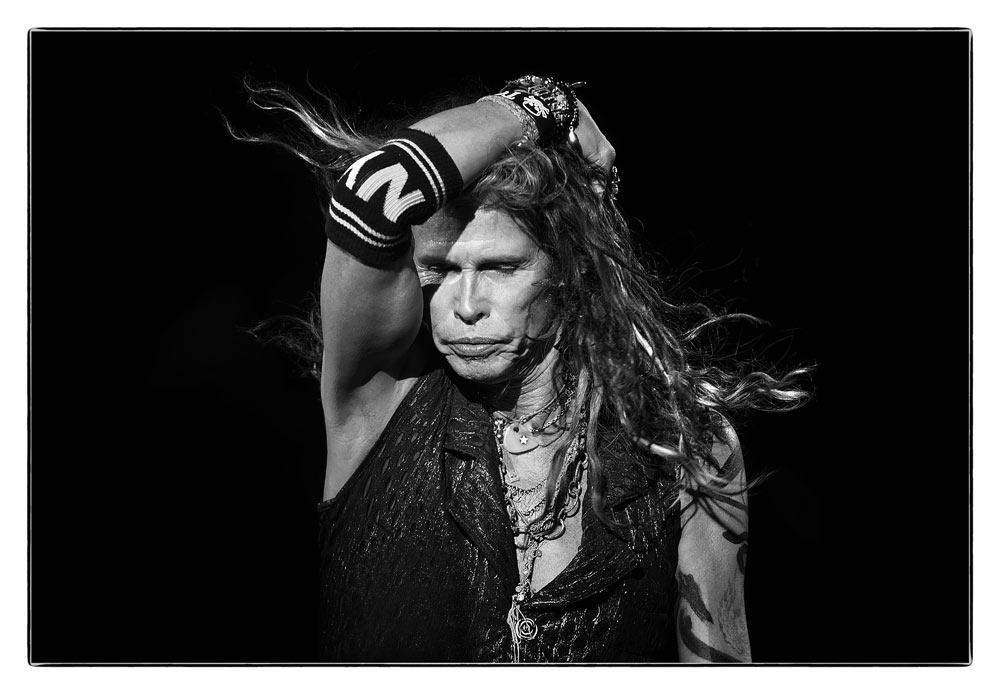
Copyrights to Ken Settle © All rights reserved.
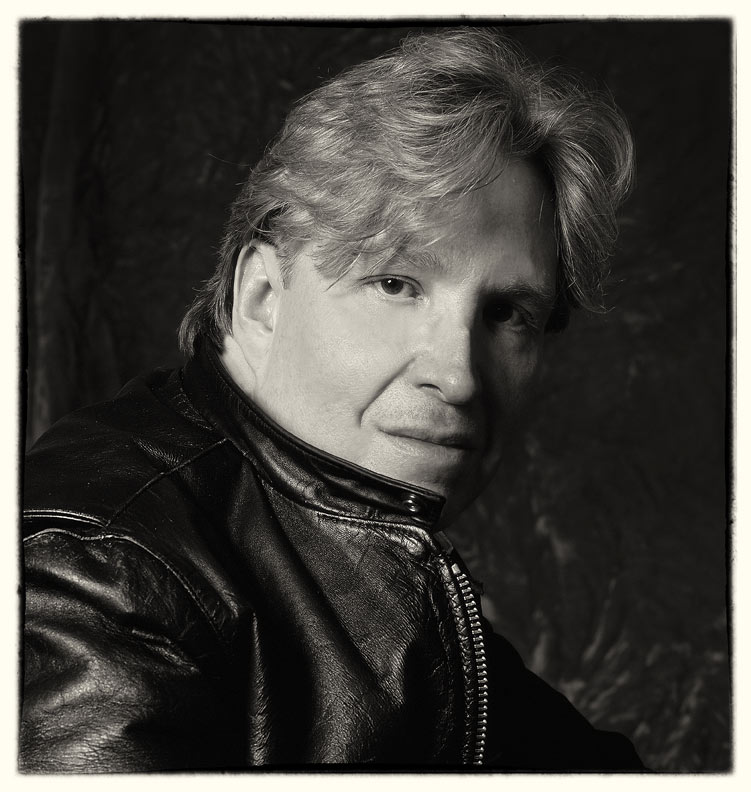
Ken Settle is a Detroit-area music photographer who began his career while barely in his teens, photographing rock legend Bob Seger in his early years, in the clubs and roller rinks around the Motor City. Through the years, Ken’s photos have been published worldwide in magazines such as Guitar Player, Rolling Stone, the original Creem Magazine, People, Playboy, Guitar World, Japan’s Player, France’s Guitarist, and England’s Kerrang!, as well as major newspapers like The Atlanta Journal-Constitution, The Boston Globe, and Detroit’s News and Free Press.
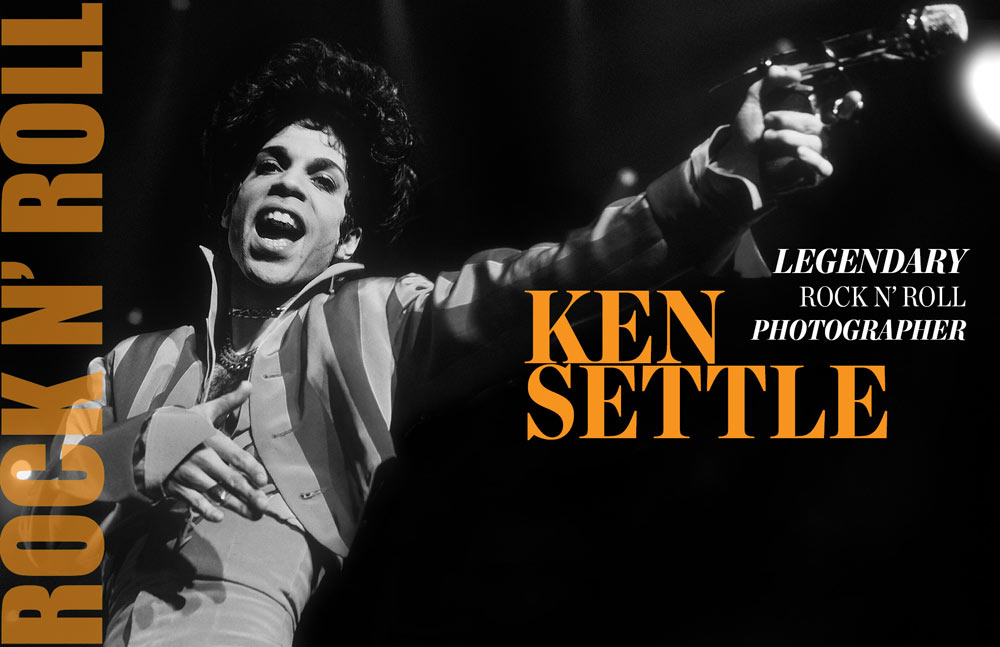
“Prince always seemed to like to come up with stuff to mess with the photographers! 1984’s Purple Rain tour found the photos shooting from the soundboard–almost unheard of at that time. Another time, we got to shoot the first song from the pit. Of course, Prince actually did that song from the soundboard, and made it back to the stage just in time for photographers to shoot when he jumped up onto his grand piano..then our first song was over! At this show in 1993 at Detroit’s Fox Theater, we got to shoot the first two songs in front of the stage! BUT..Prince had a surprise! Prince wore a gold chain mask throughout the entire first song, blocking his face! Luckily on the second song, the chain mask came off letting us see his intense, winning smile”!
Copyrights to Ken Settle © All rights reserved.
Numerous album and book projects have featured Ken’s work, including Alligator Records 20th Anniversary CD, Grand Funk’s live album, Bosnia, Tom Wheeler’s books, The Stratocaster Chronicles and The Soul Of Tone, and Martin Scorsese’s companion book to the groundbreaking PBS documentary, The Blues. Ken’s work has appeared widely in television production as well. VH1 has used his photos extensively in such shows as Behind The Music and Driven. Ken’s performance stills were used for Tom Petty’s television advertising for the Into The Great Wide Open album, as well as Bob Seger’s video for his classic “Turn The Page.” His photos even appeared in the early ’90s as set decoration for the television sitcom, Roseanne!
The Hard Rock Café has acquired 153 of Ken’s exhibition prints for its International collection and Hard Rock installations around the world, and several of his images were exhibited in People Magazine’s traveling exhibition, “Through The Years With People.”
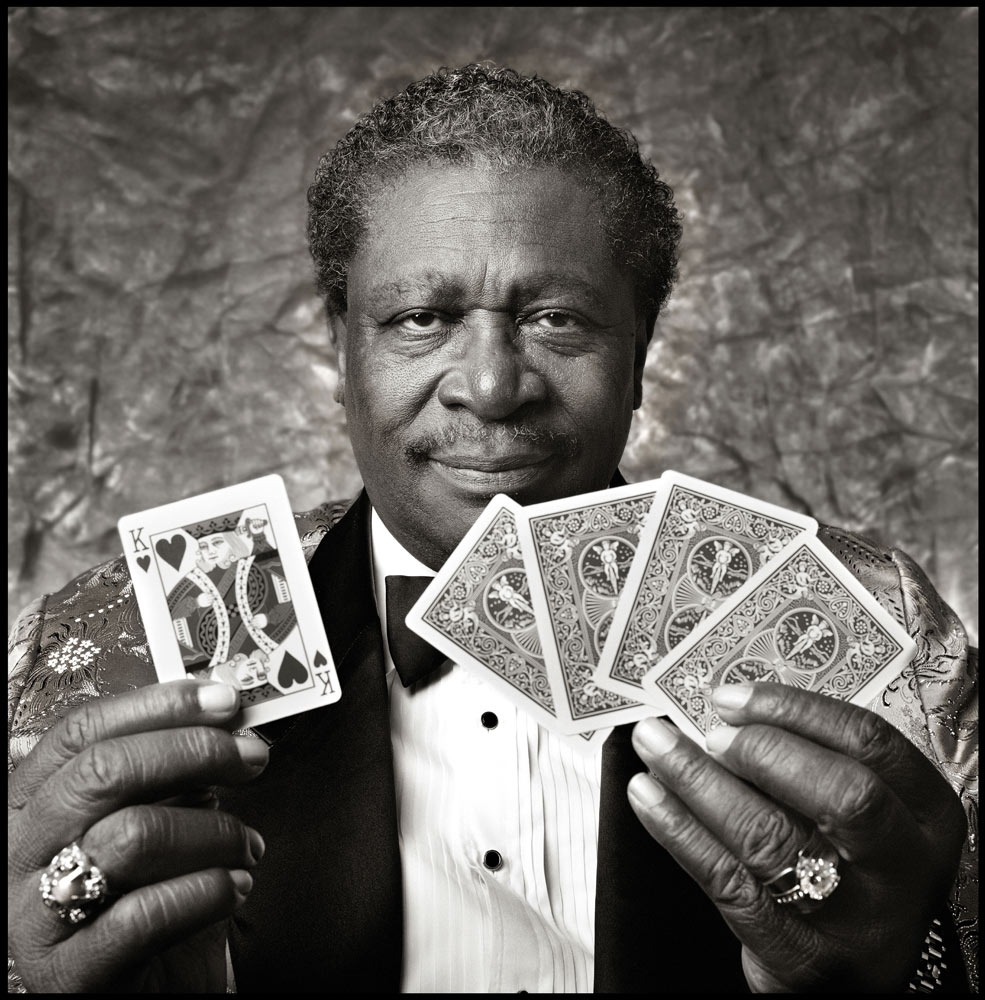
“I had set up a small, portable studio backstage at The Palace Theater in Cleveland Ohio. We finally did our photo session at midnight. Mr. King had just finished the second of two shows that day, but yet he still came to the camera freshly showered and wearing a brand new suit! This shot was used in several publications including Playboy Magazine as well as the companion book to Martin Scorsese’s PBS television series called The Blues.”
Copyrights to Ken Settle © All rights reserved.
Twenty of Ken’s photos were chosen for inclusion in the Kodak Rock Photography Collection, touted as a collection of “500 of the greatest rock photos of the past 50 years.”
A limited-edition of 100 of one of Ken’s more renowned Stevie Ray Vaughan prints was purchased by the Fender Musical Instrument Company, who has included one print in each of their 100 Stevie Ray Vaughan Tribute Series Stratocaster guitar packages. A prestigious, handmade reproduction of the legendary guitarist’s favorite instrument.
In addition, Fender is displaying several large reproductions of Ken’s photos of artists such as Eric Clapton, Stevie Ray Vaughan, Yngwie Malmsteen, and others in its newly opened Visitor’s Center/Museum in Corona, California.
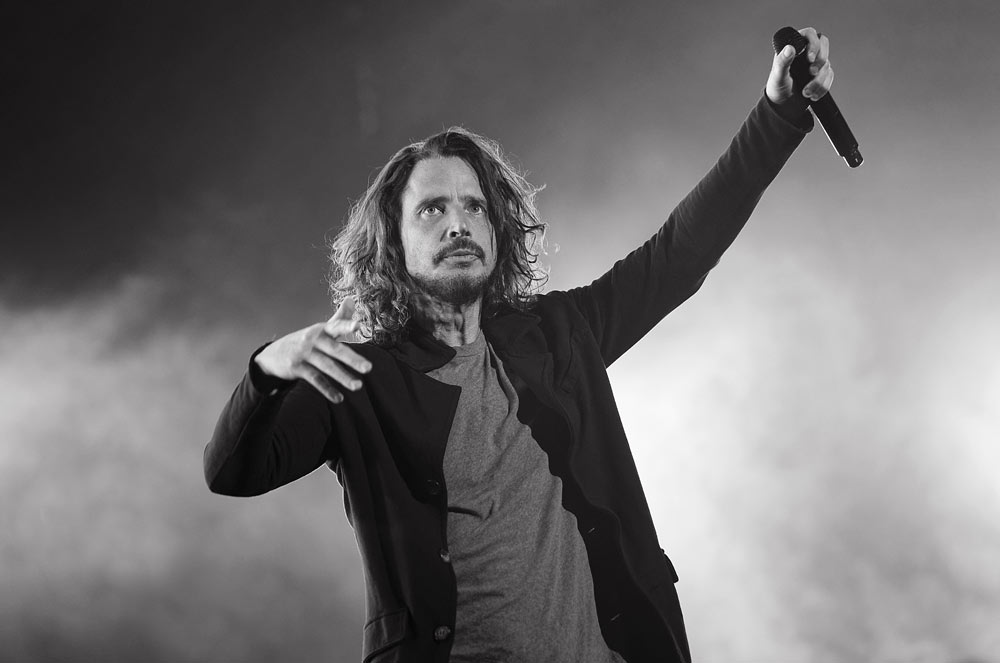
“This photo always brings about a great deal of emotion in me.
I did this image of Chris during his very last performance onstage at Detroit’s Fox Theater on May 17, 2017. A few hours later, he would tragically take his own life. What I remember most about this show, is the sheer joy that Chris showed during the first few songs. He seemed incredibly happy..fist bumping fans in the front row and throwing his arm around Kim Thayil as he soloed. In 27 years of photographing Soundgarden, I had never gotten a photo of Chris and Kim interacting like that before, just sharing the joy of making music together. Of course, now when I view the images, I find myself searching Chris’ eyes, wondering if there was something that could have given us a clue as to what he was going through.”
Copyrights to Ken Settle © All rights reserved.
“One of the big things for me was shooting that last show that Soundgarden did. Sharing the very last time Chris Cornell stepped on stage was profoundly sad. It struck me how much photos mean to people when people comment on them.
What I always come back to with that show, at least during the first three or four songs, is how joyous he seemed. People have posted a video and said that he seemed upset during this portion of the show, or he flubbed the lyrics in this portion. Maybe there’s something to that. Maybe’s there’s not.
But I just remember how much joy.
I shot Soundgarden for so many years, and I never saw Chris go up and throw his arm around Kim Thayil while Kim was playing. That night, that last night was the first time I ever shot Chris Cornell with Kim Thayil, where they got right together, and Chris is looking at Kim playing. Just the joy between those two guys sharing music. I’ve never ever seen that when I’ve photographed those guys before, going back to like 1990 or ’91.
Chris was fist-bumping people in the audience. There was this young guy, and his dad was holding him up, and Chris was fist bumpin’ this little kid. There was just so much joy there during that point in the show. That what struck me about that show more than anything else. That’s what I try to look at when I look at those photos now.
That, in itself, is a blessing despite the fact that we all just miss him terribly”.
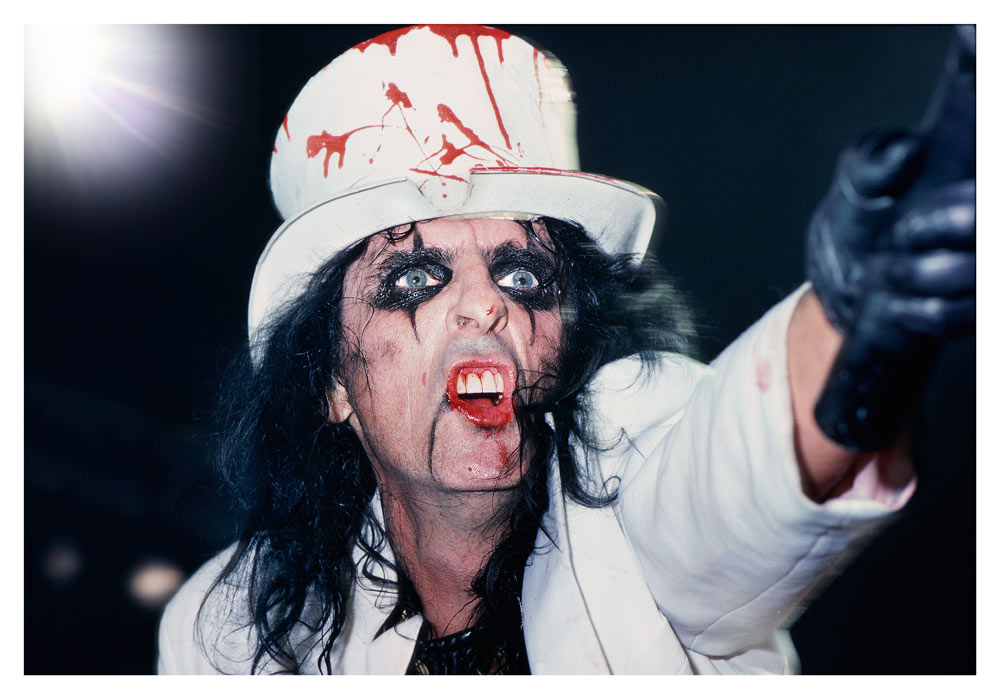
Copyrights to Ken Settle © All rights reserved.
“I think that you need to continue to love what you do. Keep that sense of awe, that sense of awe that I mentioned early on when I was trying to find out stuff when I was a little kid. Trying to find out what f4 meant as opposed to f11.
I think that you need to continue to love what you do. Keep that sense of awe, that sense of awe that I mentioned early on when I was trying to find out stuff when I was a little kid — trying to find out what f4 meant as opposed to f11.
That’s one of the wonderful things about photography. There’s always something new to learn, no matter how many years you’ve been doing it. There’s always something new to learn. Every study of photography has its own things that we can learn — simply doing tabletop photography. You have a whole lot to learn about music photography; I have a whole lot to learn about tabletop photography.
Specifically talking about music, is learning to listen to the music while you’re looking through the viewfinder and learning quickly how the artist moves when they play a certain chord or when a singer throws his arm up this way when he’s singing a certain note. Kinda learn how to keep those categorized in your mind so that next time you shoot them, you can be ready and prepared for that moment.

“The band was in the Detroit area the day before, doing a show at the Pontiac Silverdome. Bono decided that he wanted to film the video for “If God Will Send His Angels” at a small, abandoned cafe in Highland Park, Michigan (an inner urban enclave inside Detroit) called the Hi-Liter Cafe. By the next evening, the band had brought in several generators, hired some extras and spent the entire night filming for the video. I did this photo of Bono between takes as he was listening very intently to the video director, Phil Joanou. It was very nice to catch Bono in an unguarded moment when he was oblivious to the intrusion of the camera.”
Copyrights to Ken Settle © All rights reserved.
Read the full article on issue #63

